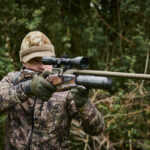Plinking starts with a .22 revolver for most folks. They are easy to use, affordable, and many of them bring out the cowboy or cowgirl in us. Here is my take on the top 10 ‘most popular’ .22 LR revolvers that are still available today.
Table of Contents
Ruger Single-Six /Single-Ten
The Ruger Single-Six .22 is probably the most well-known .22 revolver of all. The Single-Six was first released in June 1953. The Single-Six is currently produced as the New Model Single-Six. The term “New Model” simply means that this model includes Ruger’s transfer bar mechanism for increased safety, allowing one to carry the revolver safely with all six chambers loaded.
Prior to 1973, the Single-Six was produced without the transfer bar mechanism. This made it less safe to carry with all six chambers loaded and with the hammer resting on a loaded chamber. Today, you can get a Single-Six in different calibers. My Single-Six just happens to be a .32 H&R Magnum.
However, in the .22 world I have a Single-Ten. New Model Single-Six or Single-Ten revolvers are the perfect single-action revolvers for plinking, small game hunting, or competition. Most models have windage and elevation-adjustable rear sights. These guns have a cold hammer-forged barrel with precise rifling that provides exceptional accuracy.
Prices on these are pretty steep these days, and have limited availability. I’m seeing them priced in the $700 and $800 range. I like mine a lot, but if you can’t find one of these at a reasonable price, this next gun is a suitable and affordable replacement.
Ruger Wrangler
Ruger introduced the Wrangler in 2019 in three color schemes. There are many more options available now, and there is a Super Wrangler which has a .22 WMR cylinder. The Wrangler is today’s Single-Six and maybe that’s why you can’t find the Single-Six anymore. As far as I can tell, you get everything in a Wrangler you got in a Single-Six, and they’re a lot more affordable — usually in the $200 to $250 range. The Wrangler is Old West brought to life today in an affordable and fun six gun.
Chiappa 1873 SAA
Chiappa is an Italian company that has been in business since 1958. It makes an assortment of 1873 SAA firearms in .22 caliber. It has different color schemes and different barrel lengths to include a buntline model with a 12-inch barrel. The Chiappa revolvers are made with an aluminum-alloy frame with steel linings in the cylinder and barrel. Some of the models have .22 WMR cylinders, all of them have adjustable rear sights. They’re a nice value with prices varying from $180 to $275 depending on the model you select.
Ruger SP101
The Ruger SP101 revolver in .22 caliber is one of the finest double-action revolvers in the industry. Having it in .22 gives shooters the opportunity experience a small-framed, double-action revolver which mimics the operation of centerfire revolvers.
The SP101 grip has no exposed metal on the back strap. It was designed to make it a comfortable enough to shoot all day. The SP101 also features a triple-locking cylinder mechanism that securely locks the cylinder into the frame at the front, rear, and bottom, and a stainless-steel frame that has no weakening side plates.
The capacity is 8-rounds, and the barrel length is 4 inches. Although the double-action trigger exceeds the 12-pound limit on my trigger gauge, it is not an unpleasant pull. The size of the SP101 makes it a good candidate for pocket carry or stuffing in one of the smaller compartments of a backpack. One other thing I like about the SP101 is its accuracy. Mine is a real tack driver. Typical price on these is around $700.
Taurus Tracker 992
The Taurus 992 Tracker is a 40-ounce DA/SA revolver with a quick-swap cylinder that allows the user to fire .22 LR in one cylinder and .22 WMR in another. While this is a common feature in SAA revolvers, and a novel in a DA/SA revolver. The cylinders hold nine rounds.
Built on Taurus’ medium-size frame and with a full underlug barrel. No one would deny that the 992 is a hefty rimfire revolver. When shooting the Tracker 992, I can easily pretend I’m shooting a .44 magnum with no recoil.
The front ramp sight is black with a red insert which makes it easier for the front sight to stand out and be acquired. The rear sight is fully adjustable. The grip is rubber. Barrel lengths vary. Mine has a 6.5-inch barrel. With the long barrel, weight of the gun and excellent sights, this makes an excellent squirrel or varmint handgun. These guns typically run in the $450 to $500 range.
Heritage Rough Rider
The Heritage Rough Rider maintains much of the look and feel of the legendary Single-Action Army revolver, in a scaled-down version. Chambered for the .22 LR and .22 Magnum cartridges, the Rough Rider is made in so many color and tribute editions, I grew tired of trying to count them. It’s a lot. If you don’t want to fool with all that, they make the standard version in several barrel lengths that includes a buntline model or two.
The machined barrel is micro-threaded and inserted into the frame for the optimal barrel/cylinder gap to give you maximum ammunition performance. A hammer block mounted in the recoil shield provides extra protection and has a red dot indicator that lets you know when the gun is ready for action.
This is the only .22 revolver I know of that has a manual safety. Ideal for hunting, plinking, or western action shooting. The Rough Rider is a great choice for a single-action .22 revolver. It’s also inexpensive. I’ve bought a Rough Rider on sale for as little as $99. Prices generally run from $135 to $250 depending upon the configuration.
Smith & Wesson Model 17
The Model 17 is based on Smith & Wesson’s venerable K-frame, weighing in at 40 ounces and sporting a 6-inch barrel. It’s a sturdy double-action revolver with all the trappings of its centerfire brothers. It’s represented by Smith & Wesson as a resurrected member of its classic line.
Classic Smith lines are represented with a deep blue finish. It looks at home next to larger revolvers making no compromise on features, function, build quality, or aesthetics. The double-action trigger is heavy. I’m told it breaks at something like 15 pounds. My trigger pull gauge maxes out at 12 pounds. On a rimfire gun, a lighter trigger is prone to fail to ignite the cartridge. For a double-action .22 LR revolver, a heavy trigger is a fact of life. The single-action trigger is great with a 5.4-pound break. This is a rather expensive .22 at around $1,100, but it is accurate, and a classic — something to be passed down through generations.
EAA Bounty Hunter
The Bounty Hunter is made by Weihrauch, a leading German firearms manufacturer known worldwide for its precision engineered products. It is imported by EAA and has a long, reputable history here in the United States. The Bounty Hunter is available in calibers up to .45 Long Colt. As a .22 LR, it’s an 8-shot revolver with a transfer bar and recessed chambers for safety. It’s available in several finish choices. I like it in hard chrome or the deep blue alloy finish. It is a beautiful gun and being German made, it manifests quality. Price is usually under $400.
Ruger LCR/LCRX
The LCR, which stands for light compact revolver, wasn’t designed exclusively as a rimfire platform. Its main purpose was to be a deep-carry or backup gun and is therefore chambered in a variety of self-defense rounds including .38 Special, .357 Mag., .327 Fed., and 9mm. The LCR .22 carries eight rounds.
The LCRX model has an exposed hammer. Ruger incorporates a friction-reducing cam in the fire control system. The purpose of the cam’s design was to give the revolver a smooth, even pull through the entire movement of the trigger. It works as advertised. While the pull weight isn’t light, it is smooth and even — with no felt catch or changes to the resistance when running the gun.
The main purpose of the Ruger LCR is to be carried. That’s why it weighs only 14 ounces. It certainly is a lot of fun. It’s well-made and durable and built to digest rimfire ammo by the brick. It qualifies in every sense as a “real gun” for someone who doesn’t want or need something more potent than a .22 LR.
Ruger Bearcat
My favorite .22 revolver of all time is the Bearcat. It’s a small gun, approximately 70 percent the size of the Wrangler and Single-Six models. It has a decorative, unfluted cylinder with a bear and cougar design. The classic styling and one-piece frame are reminiscent of Civil War-era Remington revolvers.
The Bearcat is lightweight and almost dainty, but made very well. It functions more like the original SSA revolvers in that it has a half-cock position. Likewise, the hammer must be in half-cock for the cylinder to rotate. It has a blade front and integral notch rear sights. A cold hammer-forged barrel results in ultra-precise rifling that provides exceptional accuracy and longevity.
Sometime in the early 1980s, Bill Ruger gave an interview to a writer with the Ruger Collector’s Association (RCA) and talked about the Bearcat. Ruger said the Bearcat was the first revolver for which Ruger engineers developed the transfer bar, and that Ruger could easily have made it that way in 1974. They dropped it, Bill said, because of a mistake by the marketing department. When that department sent out the 1974 catalog and order forms to the distributors, it forgot to include the Bearcat.
When the orders came back without orders for the Bearcat, Ruger assumed that there was no demand and dropped it. Today, only old members of the Ruger Collector’s Association are aware of the true story of what really happened to the original Bearcat, but it is a part of its history.
The New Bearcat is Ruger’s reintroduced model which came out in 1993. It features smooth rosewood grips with a Ruger medallion embedded. The New Bearcat also incorporates Ruger’s transfer bar safety system. It holds six rounds and is a delight to shoot for young and old alike.

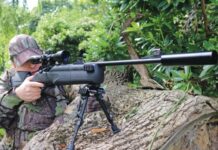
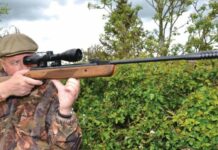
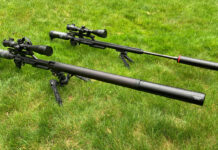
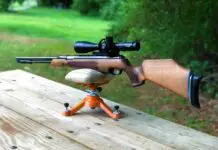

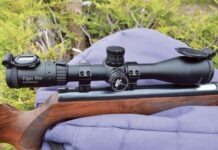
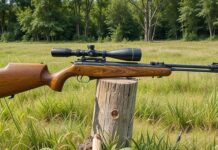
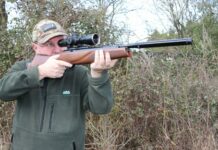
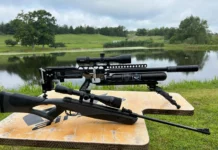
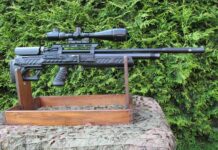
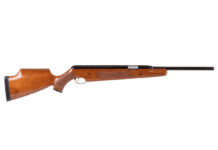
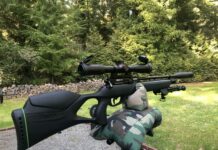
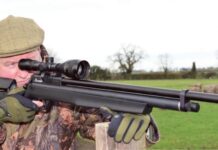
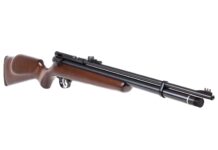
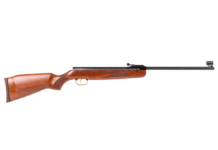
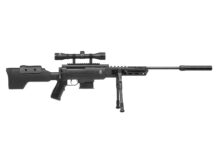
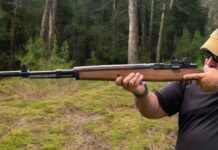
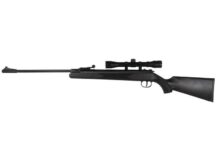
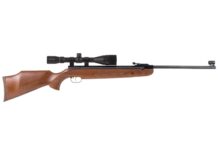
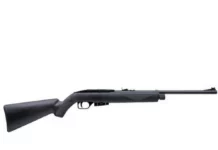
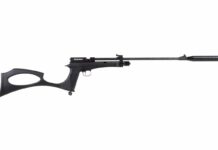
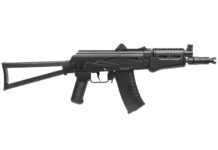
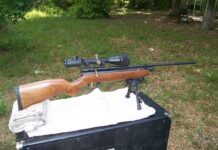
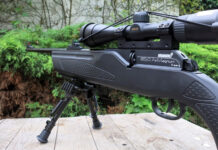
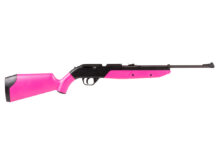

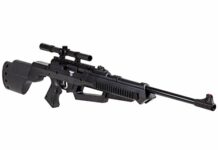
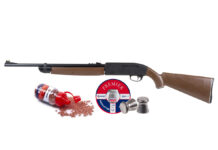
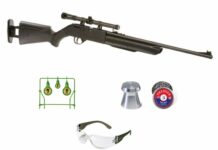
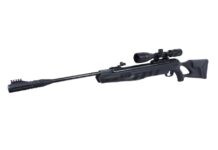
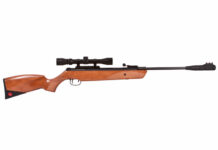
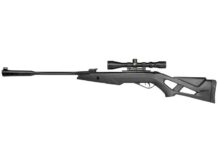
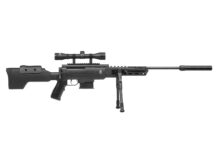
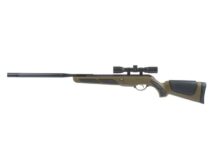





![Air gun 101: The differences between .177 & .22 – Which jobs they do best ? [Infographic]](https://airgunmaniac.com/wp-content/uploads/2024/11/1773-150x150.jpeg)


